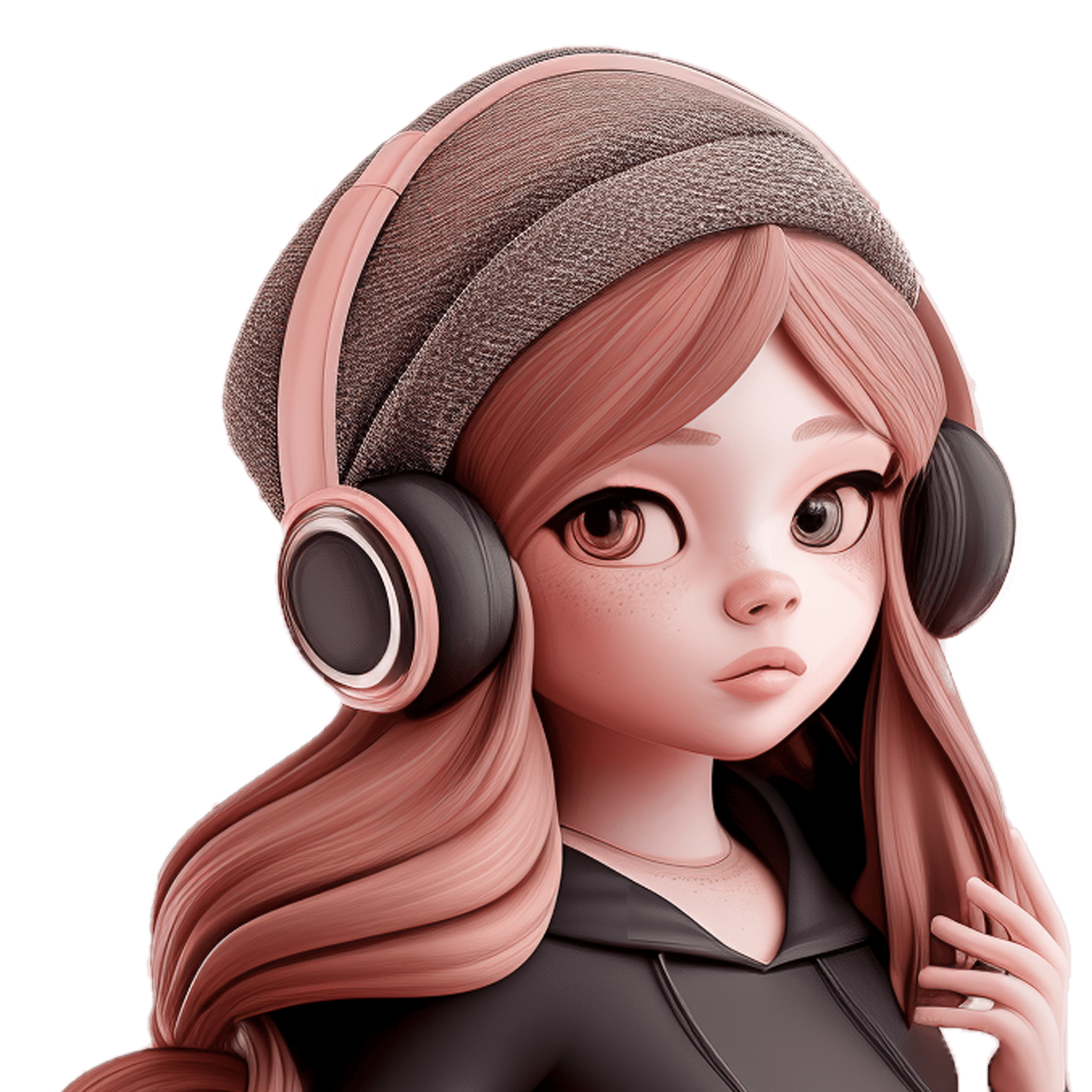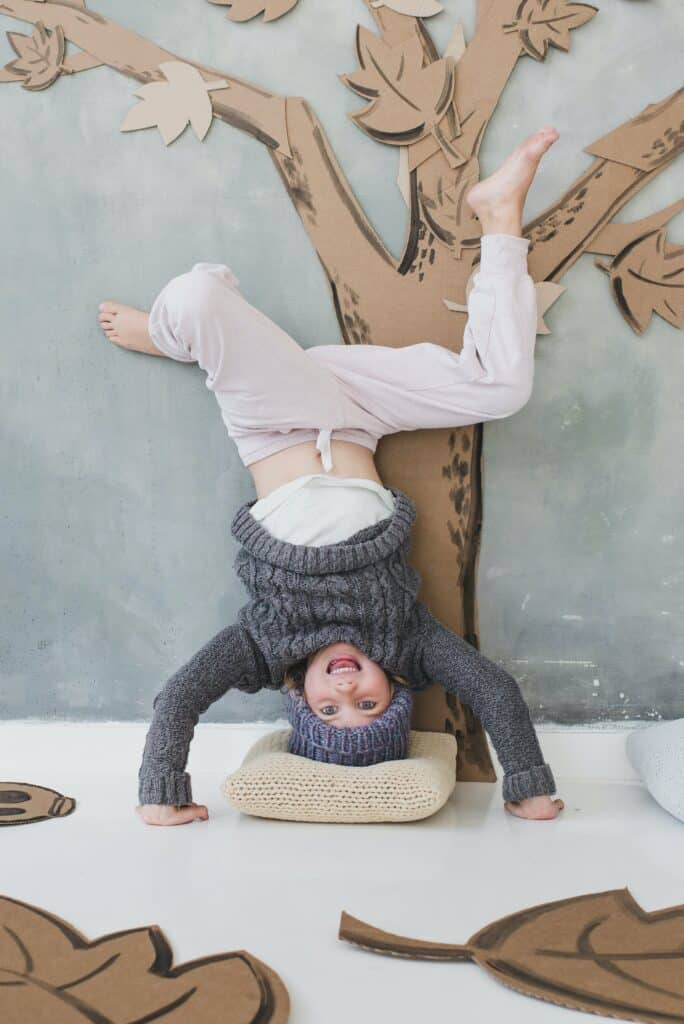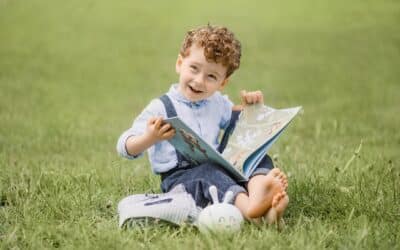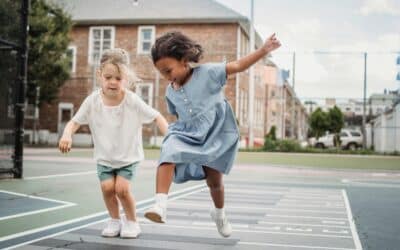One of the most significant time periods of a child’s life is when they are a toddler. A 2 to 3 year old really starts to be able to enjoy the experience of their surroundings and develop essential skills as a result of intellectual, physical, social and emotional growth.
In this guide, I’ll take you through a collection of activities that have been effective in targeting these developmental areas with my sister Nina.
Home Fun learning activities
You can have a lot of fun with your toddler from the comfort of your home. Using whatever tools and resources you have at home, you can still create good learning experiences and have a lot of fun with your toddler.
Many of the fun learning activities are actually best suited to doing at home, particularly those involving arts and crafts. Okay, let’s dive into the fun learning activities we engaged with the most. Hopefully, we’ll inspire some ideas for you to try yourself with your toddler.
Playing dress up
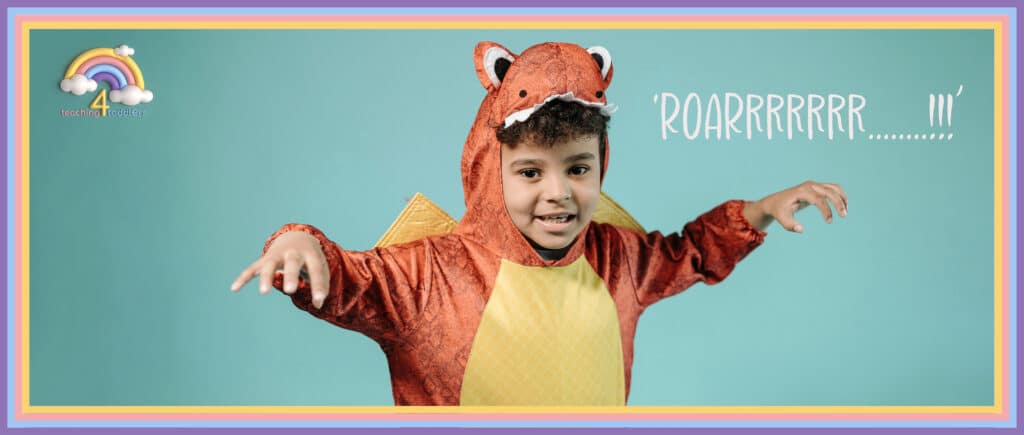
Playing dress up is a great way to stimulate your toddler’s imagination and promote creativity. By playing different roles and characters, toddlers will be able to view the world from different perspectives, enhancing their social understanding and skills.
A variety of props and clothing items can be used, such as old hats and bags, but ensure that these items are safe for your toddler to avoid choking, strangulation or suffocation risks.
To start the experience with your toddler, you will have to pick an age appropriate costume. Get your child involved by asking what they want to dress up as before choosing an option that aligns with their interests before using whatever clothing you have around the house to put together a costume. Your toddler can help you do this, which will improve their creativity and resourcefulness.
Set up their costume area so that it is easily accessible to them so that they can engage in dressing up whenever they would like to; this could mean using a costume trunk or a clothing rack which makes it easy for your child to choose which costume to wear.
To keep the activity exciting and engaging, be proactive and participate to really immerse them in a new world of different characters. Ask open-ended questions to promote conversation and language development. In addition, be sure to regularly rotate accessories and costumes so your toddler will not get bored of wearing the same costume.
A great idea is to hold a costume party for your toddler and their friends! This will make it even more exciting for your toddler and you can host games such as musical chairs and sing-alongs.
Make a mailbox
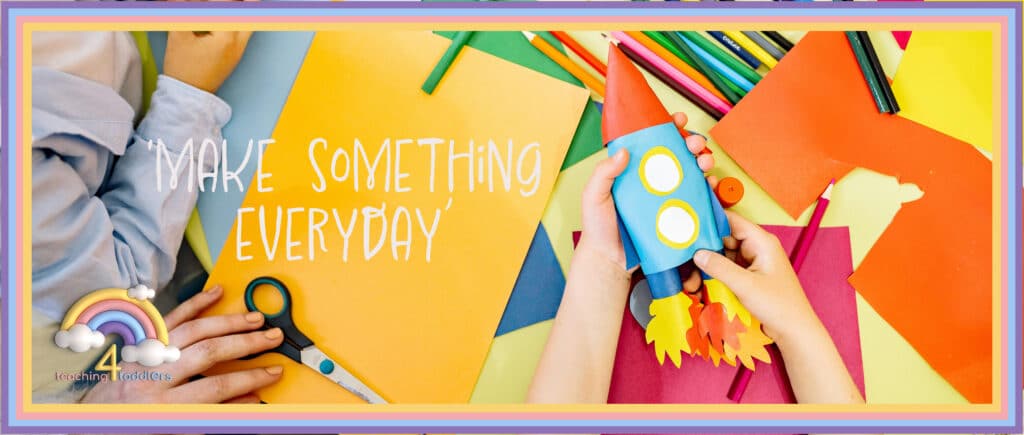
My sister, Nina, loved to make mailboxes with me and our mum and dad.
Engaging your toddler in crafting a mailbox is an excellent opportunity to develop their fine motor skills, hand-eye coordination and problem-solving abilities. To promote sustainability, you can use recycled materials like shoeboxes, scrap paper, and colourful paper. You can explain the importance of recycling to your toddler so that they can gain a greater understanding of protecting the environment.
Throughout the activity, you can encourage your child to name different colours and shapes while encountering different textures, providing a very sensory experience.
What you will need:
- Card
- Scissors
- Gluestick
- Ruler
- Pens and pencils
- Decorative items (eg ribbons, bows, stickers)
Steps to follow:
- Draw out a plan for a cuboid, making sure to leave about an inch for flaps.
- Cut out the hole for where your toddlers’ “letters” can be inserted into the box.
- Cut out the rest of the plan.
- Fold the flaps and use the glue to stick it to the adjacent walls of the cuboid.
- Decorate the mailbox with any items you have, like paint, markers, bows and ribbons.
And that’s all there is to it! Now your toddler can write you little messages or give you drawings via the mailbox.
Craft a collage
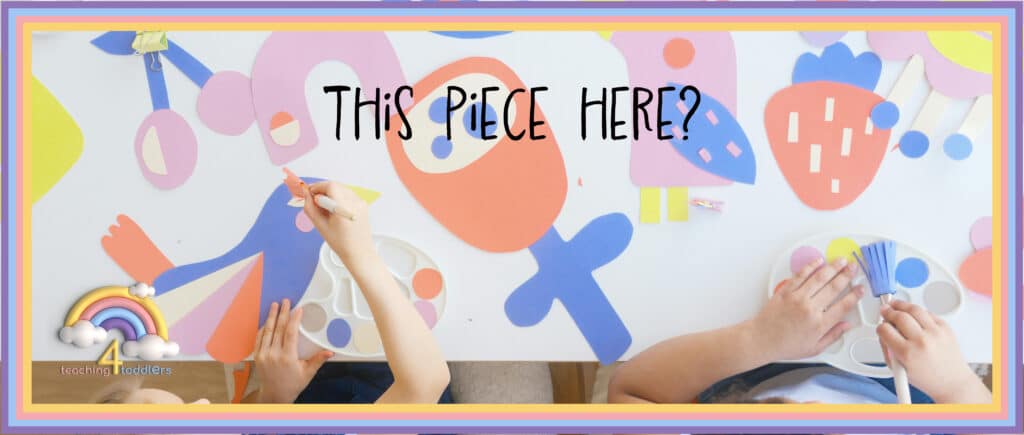
Similar to crafting a mailbox, crafting a collage is a fantastic way to engage your two or three year old toddler in a fun, developmental activity which will fine-tune their motor skills and innovation.
Once again, consider being as eco-friendly as possible using recycled items like egg cartons or pieces of fabric or even leaves and flowers collected from a nature walk.
What you will need:
- Paper
- Glue
- Scissors
- Collage pieces (can be ribbons, fabric, leaves, flowers, feathers, coloured paper and card – anything that you think will be suitable)
Steps to follow:
You can start by setting up a space for your toddler to begin crafting. This could be a table or play mat where the materials for the collage are separated into tubs so that any mess that may occur is contained yet still easy and convenient for your toddler to reach.
During the activity allow your child to take the lead in deciding what they want to create and where to put the pieces whether this be a picture or just some fun patterns.
Your job during your toddler’s arts and crafts time, will be to monitor and help them with any sticking or cutting to ensure that they do not injure themselves. You should also provide lots of positive encouragement and feedback whilst asking them all about their creative choices and ideas so that they remain engaged and present during the project. Consider making your own collage alongside your toddler to foster a sense of collaboration and bonding time.
Remember that you can always adapt this activity to suit the age of your child and their interests as they blossom into their own individual personality so that this activity can still be fun as they grow into their older years.
Reading books
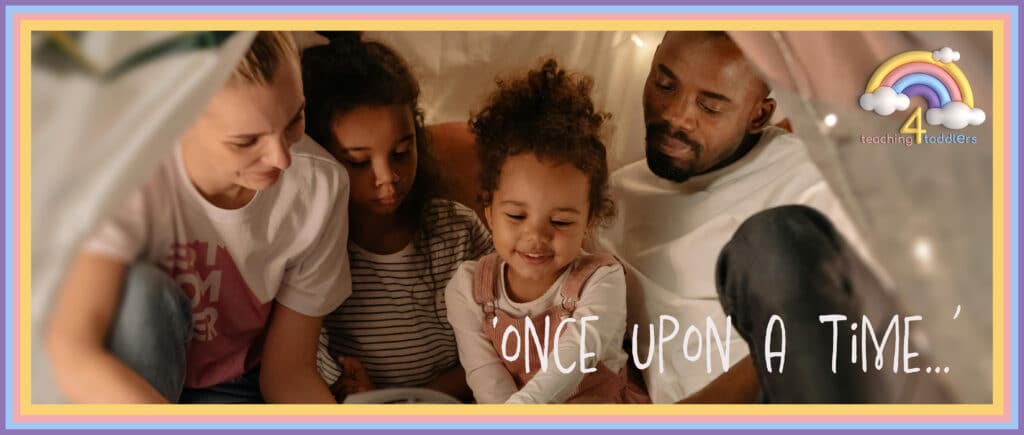
Reading is one of the best ways to gather knowledge and improve your vocabulary regardless of age. There are a variety of books that you can select for your children ranging from pop-up books to picture books to books with rhymes.
You can start reading at any age, even before your child is born so that they can get used to the sound of your voice and grow attachments. In newborns, books which are black and white are especially recommended, as research has suggested that these are more easy to focus on for them. In toddlers, this activity is especially good to boost language skills whilst building the relationship between you and your toddler.
Finding a consistent reading schedule that works for you and your family is essential, as consistency brings about discipline and for a natural reading habit to be formed. It is especially popular to read bedtime stories to children alongside a cup of milk or hot chocolate so that a cosy and enjoyable environment is created when reading so that it becomes something they look forward to.
During your reading sessions, keep your toddlers engaged by using different tones and voices for different characters. Encourage your children to join in with the reading by helping them to sound out words phonetically so that they can start to learn how to segment and blend words together as they learn to read words.
You should take note of which types of books your child enjoys so that you can keep picking books that they will be eager to read instead of pressuring them to read books they are not interested in and in turn becoming withdrawn to reading. Constantly fostering your toddler’s love for reading early on will set them up for their future academic ventures and successes.
An extra tip is to act as a reading role model. By reading books yourself, your children will see that you also put in effort to read and thus are more likely to follow your example.
Trace their body
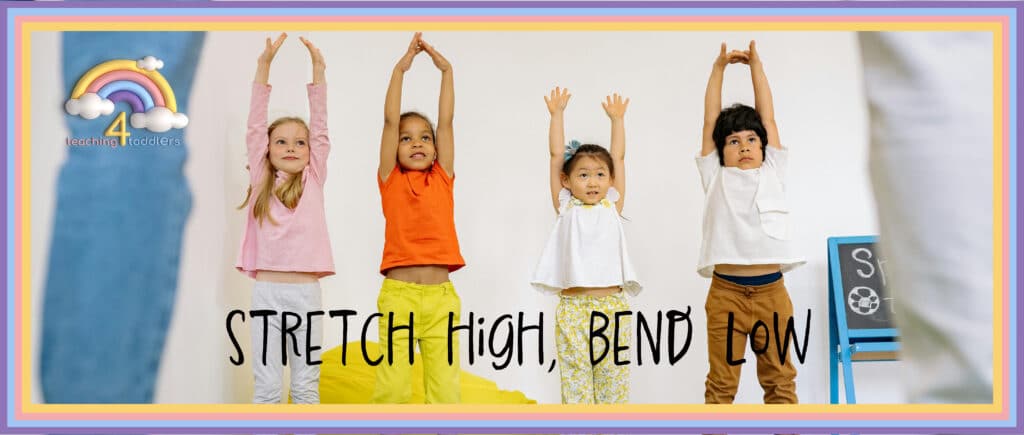
Tracing the body promotes shape recognition and body awareness in a sensory way.
To do this, you can use a large piece of paper or cardboard and get your child to lay down or put their limb on the paper for you to trace. While tracing, name the body parts and ask interactive questions like “can you point to where your nose is?” or “can you wiggle your fingers?” so that they remain engaged. After tracing, provide your child with paints or crayons and stickers so that they can decorate their traced body which will allow them to express themselves freely.
Discussing their choices of colours and patterns means that they will get the opportunity to communicate their ideas and interests – emphasise that the traced body can be turned into anything they would like it to be. You can talk to me them about what this drawing is meant to represent, for example a superhero, an alien or themself.
My stepdad, Stephen, asked me to emphasize that, as with most toddler learning activities, keep in mind that directed learning brings the best development opportunities for your toddler.
Once they are done, be sure to keep the drawing safe or in a public place (e.g. the fridge) so that they can go back and look at their work with a sense of achievement. By repeating this activity from time to time, you will be able to track your child’s physical development progress.
Fun Outdoor activities for your toddler
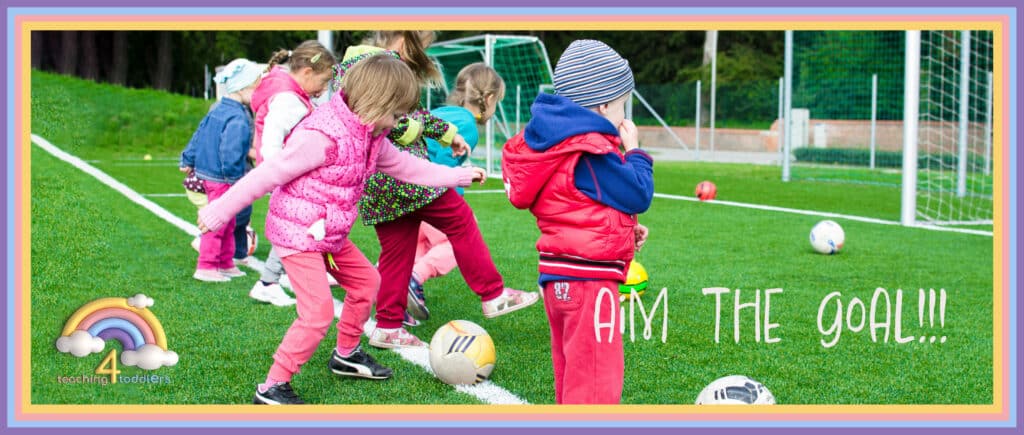
Regular outdoor time with your toddler gives them more opportunity to be exposed to different sights, sounds and textures whilst stimulating their sense of exploration and curiosity.
This could be in your backyard or in a park – anywhere is a good space to have fun and learn with your toddler!
Toddlers respond well to routines, so consider establishing a day where you (weather permitting) go outside for your toddlers fun learning time.
Imagine a boat

Imagine a boat is a simple yet engaging activity that helps to develop your toddler’s innovation, leadership and gross motor skills. Your “boat” could be a blanket or a decorated box that you will sit in together as you forge an adventurous journey in your minds together.
Pretend to be the captain of the boat as you guide the boat to the imaginary destinations whilst describing to your toddler the places you sail to to create a vivid image in your child’s head. Some fun examples of places you can pretend to travel to include: outer space to meet aliens, a favourite restaurant of your toddler, the zoo and the grocery store.
Once you have shown your toddler how the activity works you can encourage them to take on the role of captain or a navigator. Meanwhile, make the experience more realistic by pulling the box or blanket around the room to simulate the sailing motion which can also help your toddler’s balance and coordination. You can always stop to pick up “passengers” along the way (your child’s stuffed animals) and make the “passengers” chat to the toddler to encourage social interaction.
Hide and seek with toys
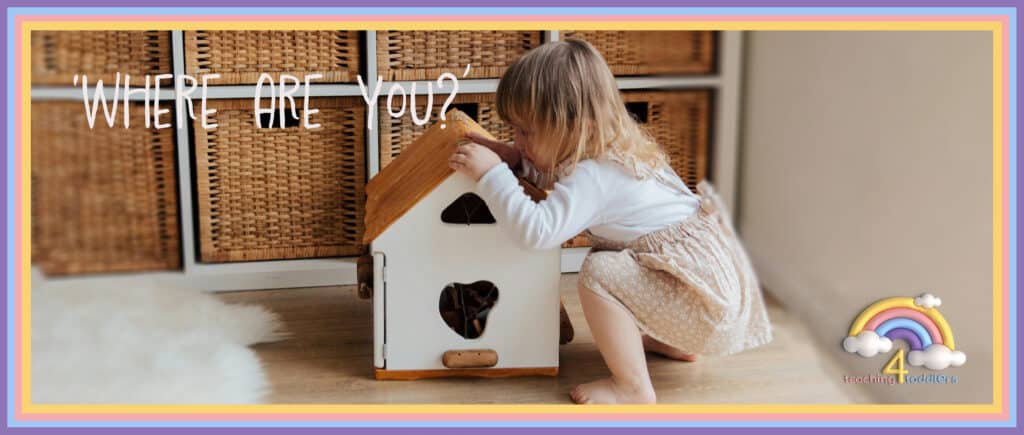
Hide and seek with toys is an activity that can promote your toddler’s problem solving skills and their cognitive thinking. Although playing this game indoors is also great, playing this game outdoors is great to provide a more sensory experience for your toddler while getting some vitamin D from the sun.
To start, gather a selection of toys or objects which are easy to hide – your 2 or 3 year old can help you pick. You can then proceed to create a list of suitable hiding spots which will not be too difficult for your toddler to find.
After hiding the toys, explain to your toddler that they will need to try and find each toy in a treasure hunt style, and that their different decisions will lead to different outcomes. You can start off the game by asking them to decide between two different areas to look in first, for example the bedroom or the garden. Proceed by letting the child search within the area, you can use words like “hot” and “hotter” if they are getting closer to the toy or “cold” and “colder” if they are moving away from the toy to aid them if they need it.
As your toddler finds each toy you can then present them with new options of places to search in, further encouraging them to make decisions. Try to use words such as “choose”, “decide”, “better”, and “rather” so that they start to recognise that these words are related to decision-making. You can also discuss the consequences of their choices, so if they found it more quickly you can explain it was a good choice and if it took longer you can discuss what they learnt from it.
As your child gets better at the game, you can increase the complexity of the choices and hiding spots to further promote their development.
Simon Says
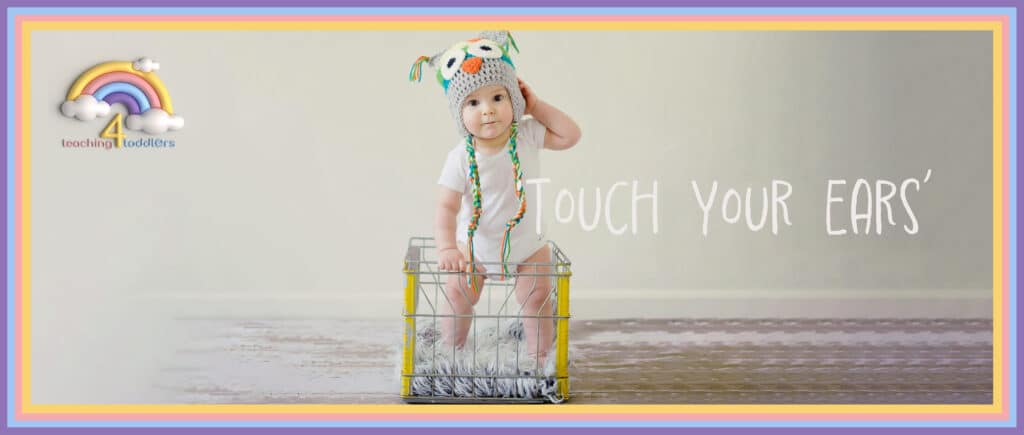
The classic game “Simon Says” will enhance you toddler’s listening skills and gross motor skills alongside their ability to take turns and follow instructions – an important social skill. This game can be played both one-on-one with your toddler but also within a group of children.
The rules of the game are as follows:
- The person picked to be Simon will give out instructions starting with “Simon says” which the other players must follow. (eg “simon says to touch you head”)
- If the player says an instruction but does not begin it with “Simon says” then you should not follow the instruction. (eg “touch your head”)
- If you follow the instruction when you were not meant to, you are out and should sit down.
- The last player standing can be Simon for the next round
After explaining the rules to your toddler or group of children, you can begin the game, starting with simpler commands before progressing to harder ones. Choosing instructions which are silly and fun, are going to be more engaging for the child to follow, so keep this in mind. Remember to also be enthusiastic and use animated expressions whilst also following the instructions to encourage more active engagement. Even if the toddler gets it wrong, still give positive reinforcement so that they remain confident.
To make the game more learning based, you can think about introducing new vocabulary for example “balance on one foot” before demonstrating what the word “balance” means. This makes learning fun and memorable by doing the action to help remember what the new words mean.
Pass a ball
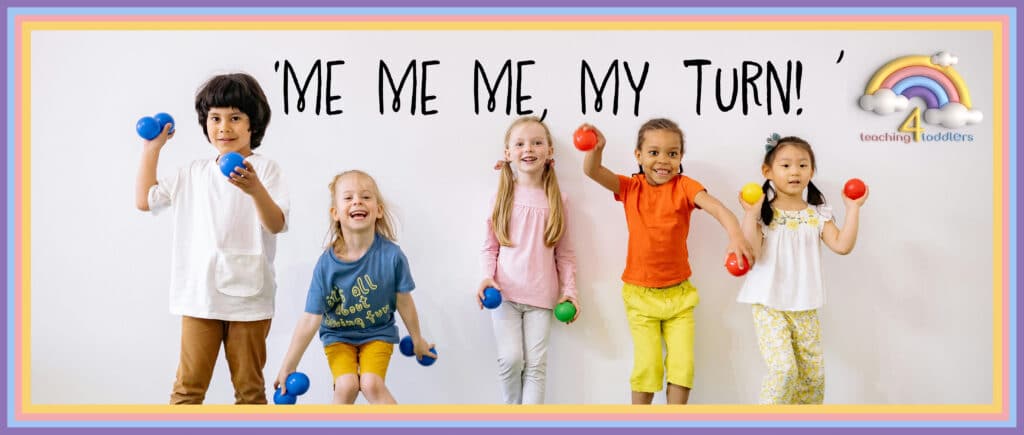
The simple game of passing a ball, is an easy way to keep your toddler entertained whilst improving their gross motor skills, hand-eye coordination, agility and social skills.
You can adapt this to your two to three year old’s ability, perhaps using larger and softer balls for children who have more difficulty with their motor skills.
After picking a suitable and safe ball, move into an area with lots of space. Start out by rolling the ball gently towards your toddler and encourage them to explore the ball and roll it back. Once they have mastered this, you can then teach them how to throw the ball, both underarm and overarm with no specific stance at first.
As your toddler gains confidence, gradually move onto more controlled and accurate throws while praising and celebrating their efforts. You can also teach them how to catch the ball as well, starting with simple hand-to-hand passes before moving onto to gently throwing the ball.
If your toddler can walk, teaching them how to kick the ball will also be a good idea to help them practise their balance. When teaching your toddler, many demonstrations should be shown so that they can see how they are meant to do it and copy you.
After learning these three basic skills of throwing, catching and kicking the ball, you can now incorporate this into games whether this be passing the ball through hoops or passing it into a designated area or games like “piggy in the middle”.
Encourage other family members or playmates to join in, to add a social element to the game by taking turns and passing the ball to each other. Consider incorporating nursery rhymes or counting exercises during the game to make it more educational for your toddler.
Passing the ball is a gateway to a myriad of other sports you can introduce your toddler to in the future as they grow and fine tune their skills, fostering a love for physical activity.
Initiate a conversation
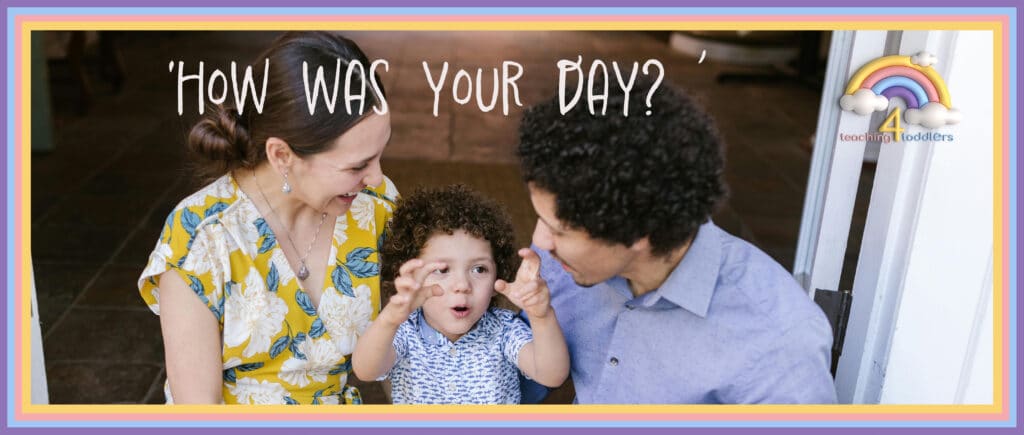
Initiating conversations with your toddler is absolutely crucial for language development and emotional connection in your child, especially between the ages of 2 and 3. Parents, caregivers and early education workers can do this by asking open-ended questions about everyday activities, books, television and sport – anything that interests your toddler!
Here are some important language milestones to note:
- 2 year olds: 2 word phrases can be used.
- 3 year olds: vocabulary of at least 200 words and can engage in simple back-and-forth conversations.
- At these ages toddlers can start to follow 2-step instructions indicating their increased understanding of complex language.
Before you initiate a conversation with your toddler, consider if it is a suitable time to do so; if it is straight after school or activities when your child is tired, they may become irritable and overwhelmed.
A good gateway to start a conversation is to play make-believe games or engage in reading and storytelling. You can ask them questions about the story and illustrations and what they enjoyed thus starting up a conversation.
Encourage your toddler throughout to join in with words or even create their own story which they can narrate to you, building on their creativity and imagination. To further enrich your toddler’s vocabulary, consider playing word games and singing rhyming songs so that they feel more engaged but have a more educated experience.
When initiating conversation with your toddler, always be patient and receptive, toddlers may have days when they feel less talkative so give them space to express themselves when they are ready.
Avoid overreactions to negative emotions shared by your child to create a safe and non-judgemental space so they will be more likely to share their opinions in the future. Instead, focus on praising them when they do communicate effectively with you.
FAQs on Toddler Fun Learning Activities
Okay, so hopefully, you’ve enjoyed reading my guide to fun learning activities and ideas to keep your toddler active, learning, and having fun. I’ll round things up with a few questions that I’ve considered.
How to make learning fun for toddlers?
One of the easiest ways to make learning more fun for toddlers is to incorporate toys and games into the learning activity. This makes the learning more hands-on for your two to three year old which will help them remember what they are learning better.
Another way is to incorporate music and movement into the learning activity as most toddlers love to sing and dance. Finding songs that teach numbers, colours and shapes is the ultimate hack to get your toddler to engage and learn. You can even consider creating your own little songs and choreography to help your toddler learn different things!
Tap into your toddler’s curiosity and senses by taking learning outdoors. This could mean taking a walk where you talk about different animals and plants, making for a fun yet educational adventure.
Finally, another idea is to consider arranging a playdate for your toddler’s friends so that they can engage in learning activities together, promoting social interaction and collaborative learning – after all, everything is more fun with friends!
How to mentally stimulate your 2 year old or 3 year old?
Target their curiosity and exploration. Look for activities that do this and are also hands-on to give an all-encompassing sensory experience which will be more engaging for your toddler.
Tailor the experience to the individual so that your 2 or 3 year old will find the activity genuinely fun and mentally stimulated throughout any activities.
What are the best learning activities for my 2 year old?/ What are the best learning activities for my 3 year old?
Apart from the already mentioned activities in this article, here are some other options you may be interested in considering:
- Playdough: provide the playdough and some other tools so that they can roll and cut out different shapes. You can encourage role-playing by asking them to “bake some cookies” from the playdough. (Note, do not actually consume the playdough).
- Reading aloud: read aloud to your toddler, choosing from age appropriate books which can become more complex as your toddler ages. Colourful illustrations are often very appealing to children so consider selecting those as they may help your toddler engage more. You can also encourage your 2 or 3 year old to try to predict what will happen next in the story.
- Building with blocks: for 2 year olds, provide slightly larger blocks to help them develop their fine motor skills as they build and knock down their creations. For three year olds, you can use smaller more intricate blocks (LEGO and Duplo are common favourites) and you can encourage them to make more elaborate structures or follow a guide.
- Shape sorters: these are toys where you match the shape to the corresponding hole. This aids them in learning shapes and colours and hand-eye coordination as they pass the different shaped blocks into the box.
- Water play: provide toys, cups and sieves during water play. This activity can be conducted outside but another popular option is during bathtime.
- “I spy”: a popular game to play in the car, “I spy” is the game where observational skills are important as one player sees an item and the other player guesses what the item is. This game will encourage your toddler to become more aware of their surroundings and details.
- Gardening: get your 2-3 year old involved when planting seeds and caring for plants. You can explain to them the importance of taking care of the wildlife around them and over time point out how the plant grows as they take care of it. You can create links between how your toddler also grows to further encourage your child to take care of their plant. This will teach them to be patient, responsible and kind.
- Visit educational places: this could include planetariums, science centres, museums and zoos. These places often have interactive exhibits made to make learning engaging for a wide range of ages for children which will expand your child’s understanding of the world around them. Zoos are an extremely popular choice as this promotes a love for animals and promotes conversation for example asking “what is your favourite animal?”. You may find if your child really loves animals, you can consider introducing a pet to the home and encourage your child to take part in the pet’s caretaking responsibilities eg feeding, washing and petting.
At this stage in your toddler’s learning journey, you as parents, caregivers and educators play a pivotal role in steering your child’s education into the right direction via fun activities.
Consistently encouraging active participation (and enthusiastically participating yourself) will create a stronger relationship and bond whilst developing important cognitive and physical skills in your toddler.
Adapt these activities to make them suitable for your child’s developmental stage and interest to make learning an enjoyable experience as they continue to embark on their educational voyage. I wish you and your toddler many hours of fun learning activities. For more inspiration, take a look at our activities for toddlers section.

